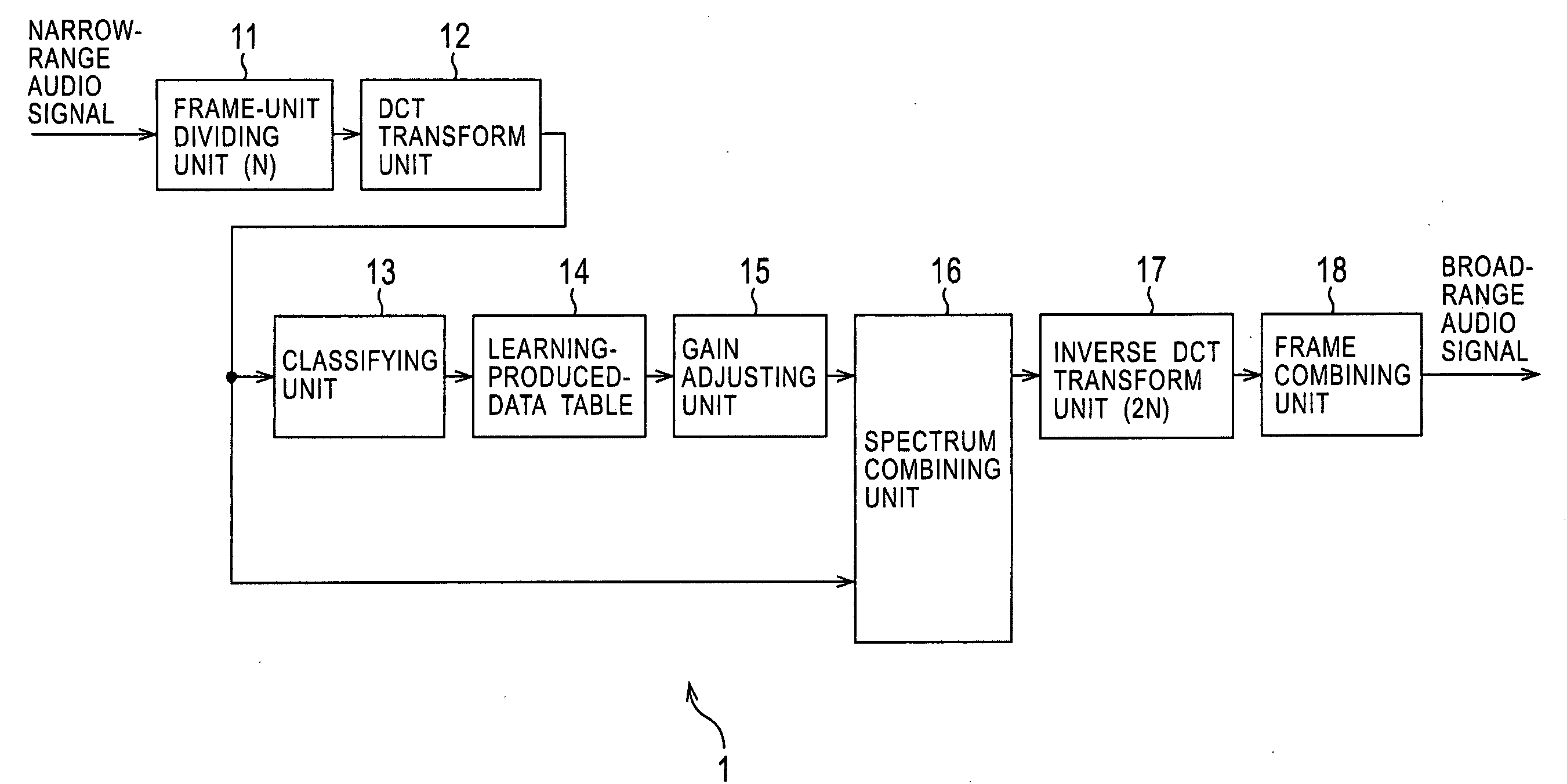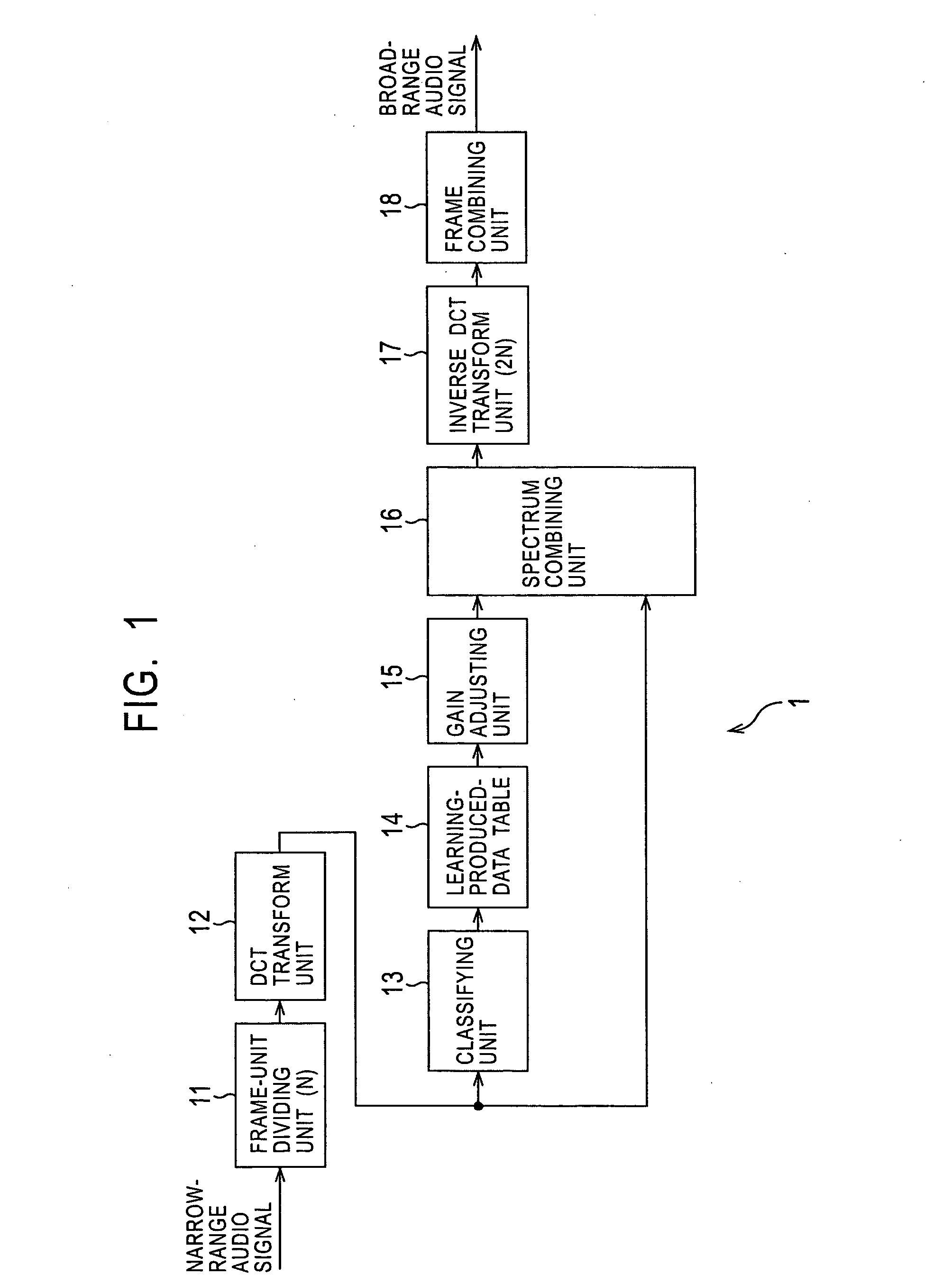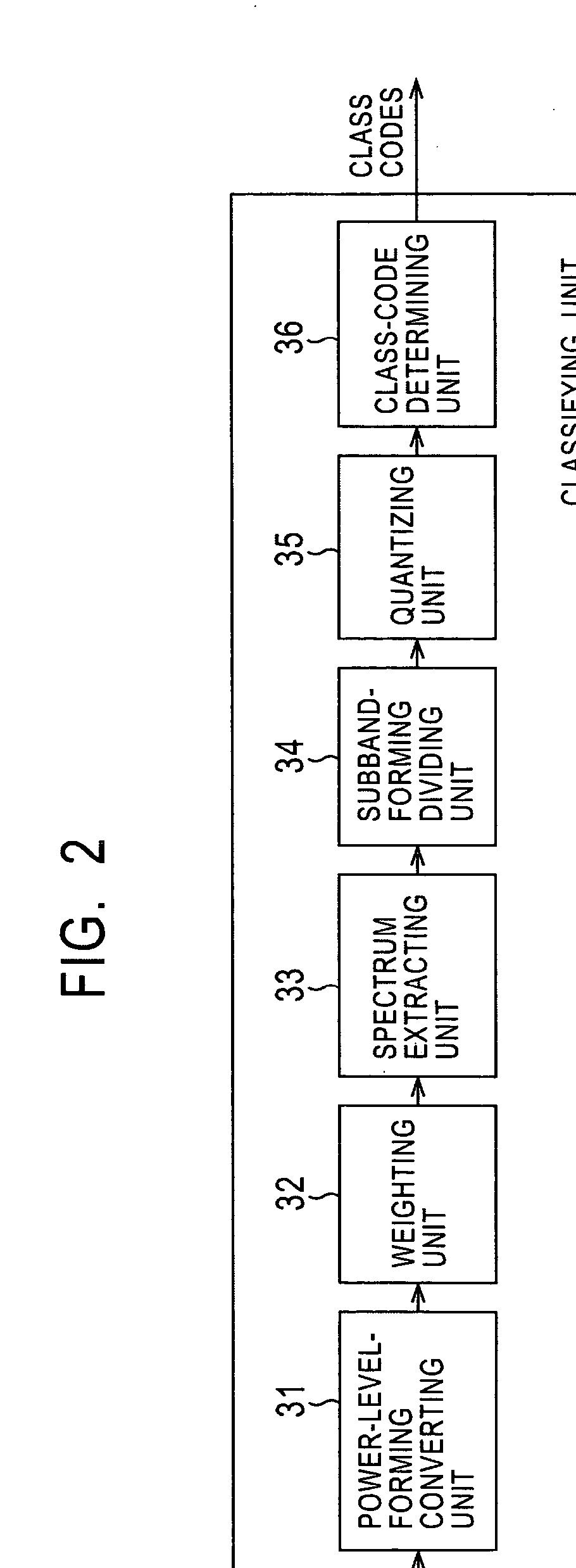Signal processing system, signal processing apparatus and method, recording medium, and program
a signal processing and signal processing technology, applied in the field of signal processing systems, signal processing apparatuses and methods, recording media, programs, etc., can solve the problems of difficult application, inability to restore unvoiced sound (consonant portion), and difficulty in applying to musical sound, etc., to achieve accurate restoration of high frequency components.
- Summary
- Abstract
- Description
- Claims
- Application Information
AI Technical Summary
Benefits of technology
Problems solved by technology
Method used
Image
Examples
first embodiment
[0095]FIG. 1 shows an example of an audio-signal broadening apparatus according to the present invention.
[0096] A narrow-range audio signal having low frequency components (not having high frequency components) is input to a frame-unit dividing unit 11. The input audio signal is divided by a predetermined frame (unit time) into blocks, and is output to a DCT (Discrete Cosine Transform) converting unit 12.
[0097] The DCT converting unit 12 performs, for each frame, a spectrum transform on the input audio signal, which is in time domain and is input from the frame-unit dividing unit 11, into a signal in frequency domain, and outputs the transformed signal to a classifying unit 13 and to a spectrum combining unit 16. As a method for performing the spectrum transform, an M-DCT (modified DCT) which allows adjacent blocks to half overlap each other is here used.
[0098] Spectrum transforms other the above M-DCT transform include DFT (Discrete Fourier Transform), DCT (Discrete Cosine Transf...
second embodiment
[0158]FIG. 14 shows an example of an image-signal broadening apparatus according to the present invention. In the above-described audio-signal broadening apparatus 1, an input signal is a one-dimensional audio signal and is processed in units of frames, while, in the image-signal broadening apparatus 80, an input signal is processed in units of blocks (e.g., 8×8 pixels) since it is a two-dimensional image signal. A block-forming diving unit 91, a DCT transform unit 92, a classifying unit 93, a learning-produced-data table 94, a combining unit 95, and an inverse DCT transform unit 96, in FIG. 14, have functions basically similar to those of the frame-unit dividing unit 11, the DCT transform unit 12, the classifying unit 13, the learning-produced-data table 14, the spectrum combining unit 16, and the inverse DCT transform unit 17, in FIG. 1. Accordingly, their descriptions are omitted. The gain adjusting unit 15 and the frame combining unit 18, shown in FIG. 1, are omitted since they ...
third embodiment
[0189]FIG. 22 shows the configuration of a transmission system (the system means a logical set of a plurality of apparatuses, and is irrespective of a state in which apparatuses having structures are in the same housing) according to the present invention.
[0190] In this transmission system, cellular phones 3011 and 3012 perform radio transmission and reception with base stations 3021 and 3022, and each of the base stations 3021 and 3022 performs transmission and reception with a switching center 303, whereby audio transmission and reception between the cellular phones 3011 and 3012 can be performed by using the base stations 3021 and 3022 and the switching center 303. The base stations 3021 and 3022 may be the same base station and may be different base stations.
[0191] The base stations 3021 and 3022 are hereinafter referred to as the cellular phone 301 unless they particularly need to be distinguished.
[0192]FIG. 23 shows an example of the cellular phone 3011 in FIG. 22. Since the...
PUM
 Login to View More
Login to View More Abstract
Description
Claims
Application Information
 Login to View More
Login to View More - R&D
- Intellectual Property
- Life Sciences
- Materials
- Tech Scout
- Unparalleled Data Quality
- Higher Quality Content
- 60% Fewer Hallucinations
Browse by: Latest US Patents, China's latest patents, Technical Efficacy Thesaurus, Application Domain, Technology Topic, Popular Technical Reports.
© 2025 PatSnap. All rights reserved.Legal|Privacy policy|Modern Slavery Act Transparency Statement|Sitemap|About US| Contact US: help@patsnap.com



